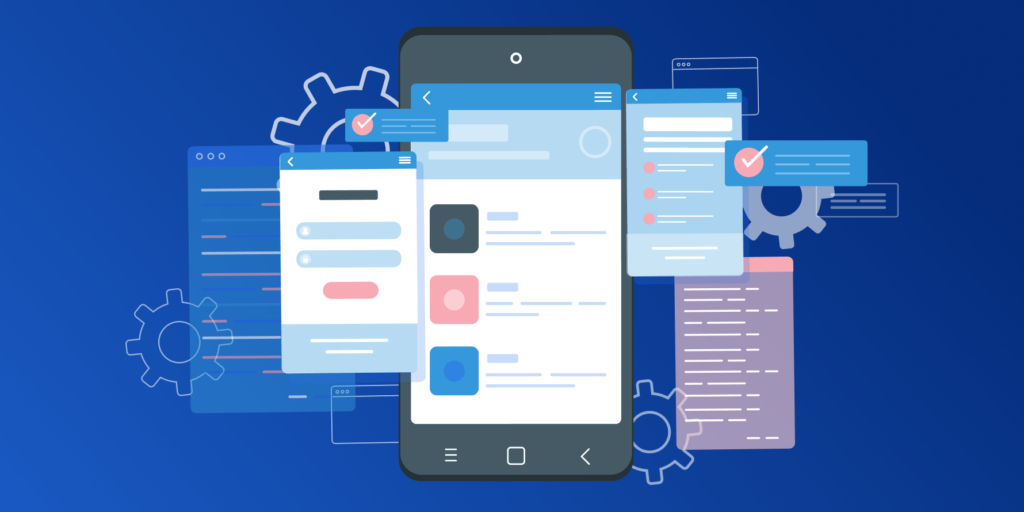Table of Contents

Choosing the essential features for your minimum viable product
For many entrepreneurs, having a great idea and a solid development team automatically equals the success of a future project.
But things are not so simple. The users may not like the product, it may lack certain features, or you might need to implement some major changes. This, in turn, will affect the project budget and the release date. To avoid these issues and optimize the development process, it is highly recommended to create an MVP. The minimum viable product will help you get the feedback from real users, test your idea and optimize the product on the go, thus, making sure the final product will be exactly what it is supposed to be.
One of the critical things in the MVP development is the choice of the features for the MVP. The MVP requires a minimalistic set of must-have features – but how do you determine which ones are essential and which ones are just a nice addition to the product?
MVP Mythbusting: not for the startups only
The biggest myth that many people tend to believe is that MVP is needed for startups only – but that’s not true at all. The benefits that MVP brings are applicable for businesses of any size and type, from the industry giants to the unicorns:
- Better allocation and management of budget and time,
- Fewer errors and bugs,
- Opportunity to test the product idea with real users,
- Option to implement all the needed changes at any time.
Because MVP stands for a minimum viable product, that means it has the basic set of features with no extra add-ons. However, one should not confuse an MVP and a prototype: while a prototype is a digital representation of a product that can be tested, MVP is a working piece of software and is developed after the prototype creation. And in order to make MVP user-friendly and functional, it is important to select the right features to include in it.
Write user stories
We already wrote about the importance of writing user stories in Agile development. User stories help both the client and the development team understand how the user will possibly act and predict the actions that he may take.
This, in turn, will help you determine the features that the MVP needs. For example, if you know that all users will perform a certain action, then you must include the corresponding feature in the MVP.
User stories help you get a clear picture of a user journey, identify the possible user’s needs and find the most suitable solution. Thus, user stories can serve as one of the cornerstones for the MVP creation.
Choose one target audience segment
When choosing the features for the MVP, it’s quite easy to get confused as there may be several segments of users to cater to and each would demand a different set of features. Thus, you will have a hard time choosing the most essential ones.
In order to restrain the MVP from becoming over-loaded with features, it is recommended to choose just one market segment that would consist of your early adopters. You will be able to expand the product’s functionality and cater to multiple audiences later on but at the MVP stage, you need to keep the product simple and fit it within one category of users.
Differentiate between must-have and nice-to-have features
The main goal of the MVP is to give users the idea of a product and provide an option to actually test and use it. And this excludes all the fancy features.
Before creating the MVP, sit down and identify your perfect target audience (remember about focusing on one segment only!). Once this is done, list down all the features that your product should have and try separating them by the obligatory and additional ones.
Ask yourself if the product provides value to the users without a particular feature. If we take Via app as an example, it absolutely needs an integrated map to navigate both the drivers and the users, but the option of arranging a ride for the guests can be eliminated at the MVP development stage.
By identifying the essential features and separating them from the extra add-ons, you will be able to reduce the development costs and achieve the required goal faster.
Constantly test the MVP and optimize the features correspondingly
What’s great about MVP is that it allows you to test the product and immediately implement any changes to it in accordance with the feedback from the users. Therefore, take the chance and constantly test the MVP and its performance and monitor the users’ feedback.
Once you know what the users love and hate about the product, you can apply the needed changes to ensure the final product will 100% satisfy the users’ needs. Such an approach saves the development time by letting you fix the product during the development process and also reduces the risk that the audience will not like the product.
Conclusion
The creation of MVP is an obligatory stage in the development process of any software product. It greatly reduces the number of risks, helps you better understand the audience and create a working product for a relatively low cost.
When working on the MVP, it is important to remember that it is the validation of a business need – not the full implementation of a big idea. With this in mind, you will be able to easily identify the needed features for your MVP and create a user-friendly and highly functional product.



Comments